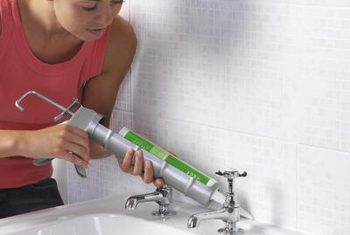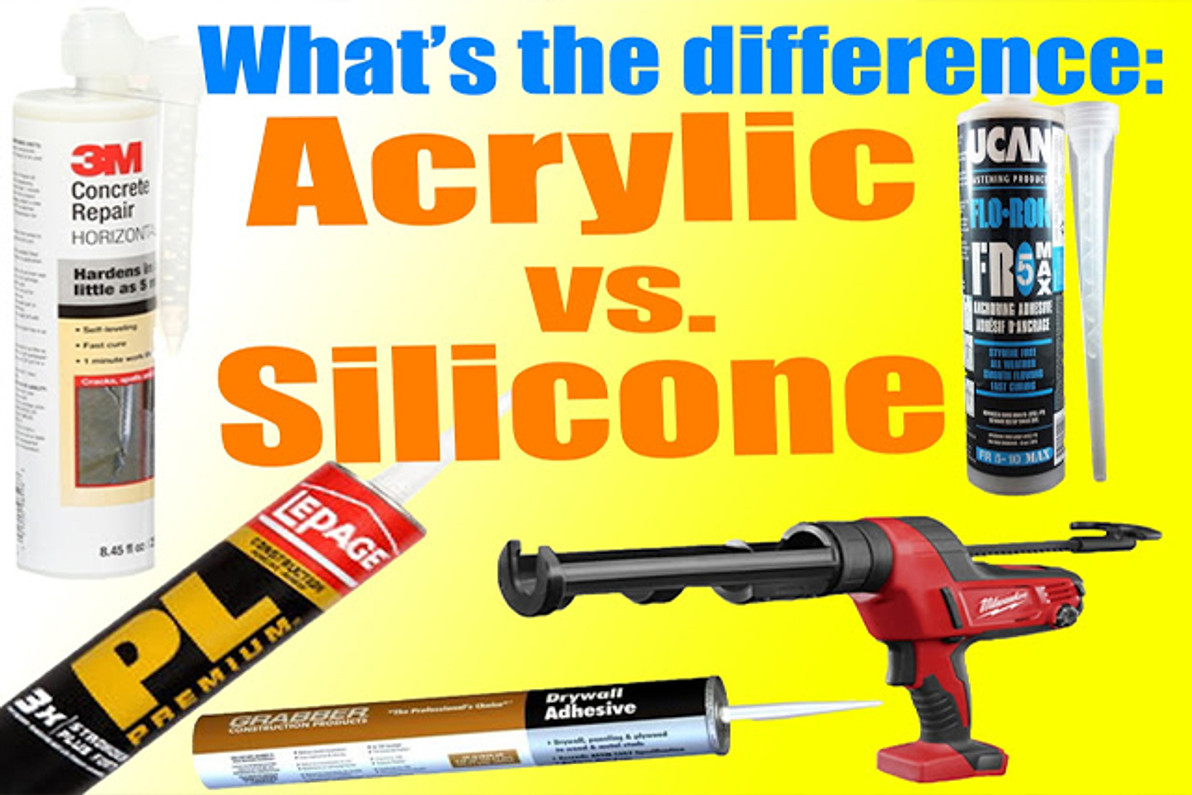What's the Different Between Acrylic and Silicone Caulk?
When people buy caulk, they have a few choices: water-based, polyurethane foam, butyl rubber, latex, the most common, however, are acrylic and silicone. While many people, without research, will think they are the same, there are significant differences between the two. The largest difference is in the way they are used. Keep reading to find out more!
Caulk
First, what is caulk? It's a soft and flexible, almost rubber-like material, but more rigid when dry (especially with acrylic). They are considered non-elastomeric and do not return to original size or shape once stretched or compressed. It comes in a few colors but mainly white or clear. Caulk is used to fill gaps and cracks to seal from water seeping. Can fill very tiny gaps, 6 mm or less!
Siliconized Acrylic Caulk

Photo from: http://www.kirkwooddecor.co.uk/2015/11/what-caulk...
Siliconized acrylic caulk is water-based and can be painted over once dried, however, the rigidness makes them prone to cracking in areas with up and down temperatures. It also tends to dry out over time. You can also use acrylic caulk in the form of Acrylic Latex. Acrylic caulk has a life expectancy of about 25-35 years. It is easy to apply, as well as easy to clean before it is dry, and it has little odor. Acrylic caulk can be used for interior or exterior surfaces where water isn't likely to touch it (i.e. built-in furniture, crown moulding, skirting boards).
Silicone Caulk

Photo from: http://homeguides.sfgate.com/install-bathroom-silicone-70031.html
Silicone caulk is water resistant and adheres to smooth surfaces like metal, glass, and tile. It's able to used nearly everywhere, from bathrooms, tubs, sinks, and even windows and doors. Silicone caulk cannot be painted over and it's a little more difficult to apply compared to acrylic caulk because it has a stickier texture. A benefit of silicone is that it remains flexible after curing and must be cleaned using solvents. Silicone dries slower than acrylic caulk.
Application
Both are applied with a caulking gun (we have a ton, click here!).
Acrylic caulk is best applied a 4°C (40°F).
Silicone caulk can be applied at nearly any temperature.
We hope you enjoyed our brief post discussing the different between the two. If you have any questions, feel free to comment below or email us at sales@edmfast.com. One of our experts will get back to you ASAP. Thanks for stopping by and we hope to see you at Edmonton Fasteners & Tools soon!
Recent Posts
-
Bissett is Universally Compatible, See Why and How
With Bissett's over 600 fasteners, you're bound to find the perfect fastener for your tool. You're n …2021 Mar 16th -
How To Choose Safety Gloves
We love healthy hands at Edmonton Fasteners. We’re not a skincare shop (clearly) but we do off …2021 Mar 8th -
Three Easy Home Fixes with Gorilla Glue
Gorilla Glue is a household name because of one reason: it works. We carry Gorilla Glue at Edmonton …2021 Feb 2nd




